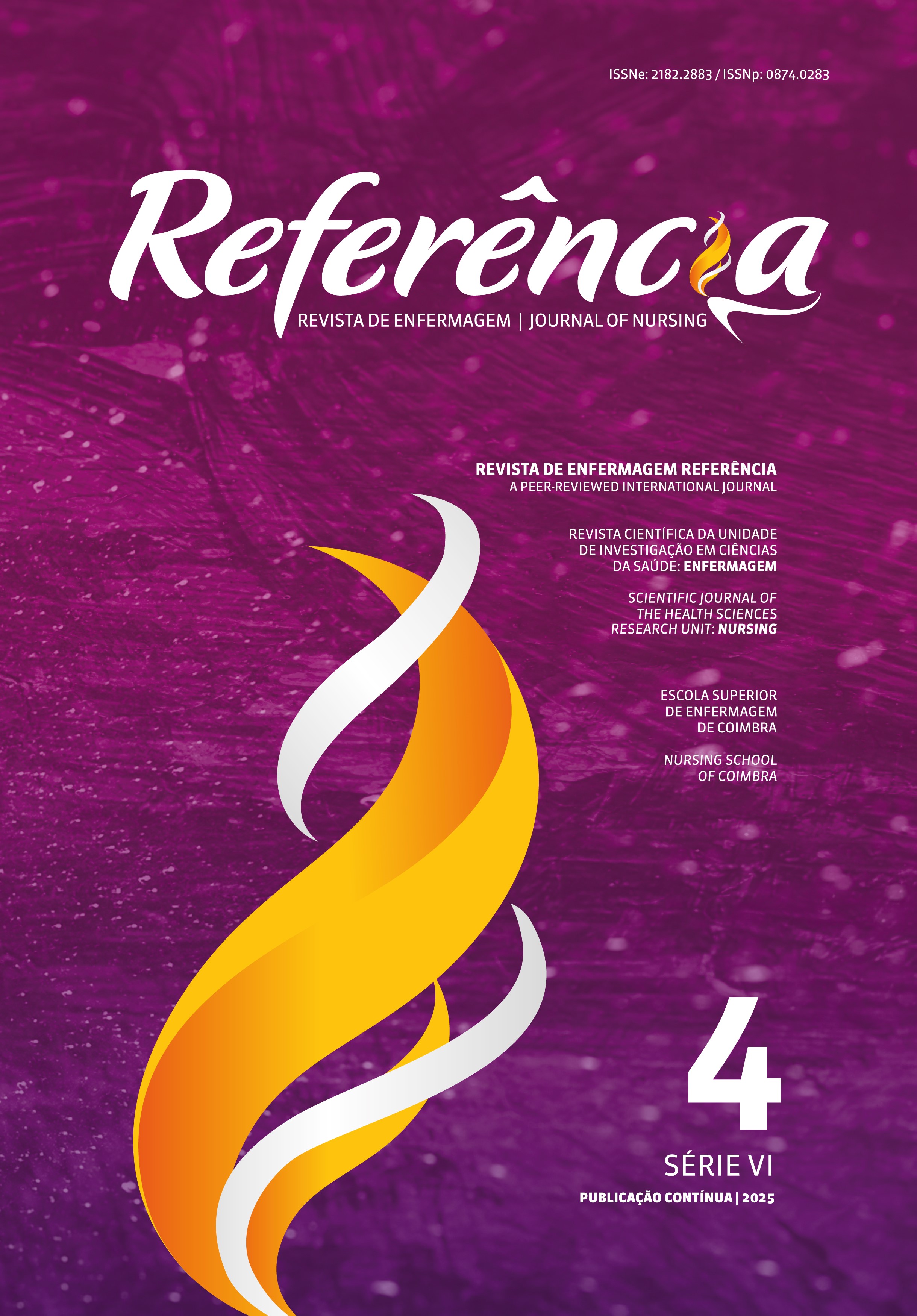Theoretical usability of an innovative device for post-infarction rehabilitation: Observational study with rehabilitation nurses
DOI:
https://doi.org/10.12707/RV21108Keywords:
rehabilitation nursing, myocardial infarction, cardiac rehabilitation, technological development and innovation projects, user-centered designAbstract
Background: Cardiac rehabilitation programs are essential for recovering and maintaining functional capacity in patients with acute myocardial infarction. Current programs have high dropout rates and require more motivational features.
Objectives: To assess and compare the usability of two prototypes of an innovative rehabilitation device for post-infarction patients.
Methodology: This is a quantitative observational study using a 5-point Likert-type scale with 16 nurse specialists in rehabilitation, selected through snowball sampling.
Results: The quantitative analysis showed a three-dimensional assessment of the prototypes with mean scores of 4, indicating usability and intention to use. Both prototypes were considered useful, functional, and easy to learn and use, with few differences reported on the three dimensions. The ease of learning was more consensual in the Alpha prototype.
Conclusion: The two developed prototypes present high usability scores and are very similar, demonstrating great potential for effectiveness in the intended context.
Downloads
References
Anderson, L., Thompson, D. R., Oldridge, N., Zwisler, A.-D., Rees, K., Martin, N., & Taylor, R. S. (2016). Exercise-based cardiac rehabilitation for coronary heart disease. Cochrane Database of Systematic Reviews, 5(1), CD001800. https://doi.org/10.1002/14651858.CD001800.pub3
Castner, J., Sullivan, S. S., Titus, A. H., & Klingman, K. J. (2016). Strengthening the role of nurses in medical device development. Journal of Professional Nursing, 32(4), 300-305. https://doi.org/10.1016/j.profnurs.2016.01.002
Claes, J., Buys, R., Woods, C., Briggs, A., Geue, C., Aitken, M., Moyna, N., Moran, K., McCaffrey, N., Chouvarda, I., Walsh, D., Budts, W., Filos, D., Triantafyllidis, A., Maglaveras, N., & Cornelissen, V. A. (2017). BMJ Open, 7(6), e016781. https://doi.org/10.1136/bmjopen-2017-016781
Govindarajulu, U. S., Stillo, M., Goldfarb, D., Matheny, G. E., & Resnic, F. S. (2017). Learning curve estimation in medical devices and procedures: Hierarchical modeling. Statistics in Medicine, 36(17), 2764-2785. https://doi.org/10.1002/sim.7309
He, Y., Chen, Q., & Kitkuakul, S. (2018). Regulatory focus and technology acceptance: Perceived ease of use and usefulness as efficacy. Cogent Business & Management, 5(1), 1459006. https://doi.org/10.1080/23311975.2018.1459006
Ho, K-F., Ho, C-H., & Chung, M-H. (2019). Theoretical integration of user satisfaction and technology acceptance of the nursing process information system. PLoS ONE, 14(6), e0217622. https://doi.org/10.1371/journal.pone.0217622
International Organization for Standardization. (2018). Ergonomics of human-system interaction – Part 11: Usability: Definitions and Concepts (ISO 9241-11:2018). https://infostore.saiglobal.com/preview/is/en/2018/i.s.eniso9241-11-2018.pdf?sku=1980667
Lopes, I., Delgado, B. M., Mendes, M. E., Preto, L. S., & Novo, A. F. (2018). Impact of a home-based exercise program on the functional capacity of the person with coronary artery disease. Revista de Enfermagem Referência, 4(19), 71-80. https://doi.org/10.12707/RIV18036
Martins, A. I., Rosa, A. F., Queirós, A., Silva, A., & Rocha, N. P. (2015). European Portuguese validation of the System Usability Scale (SUS). Procedia Computer Science, 67, 293-300. https://doi.org/10.1016/j.procs.2015.09.273
Michelsen, H. Ö., Sjölin, I., Schlyter, M., Hagström, E., Kiessling, A., Henriksson, P., Held, C., Hag, E., Nilsson, L., Bäck, M., Schiopu, A., Zaman, M. J., & Leosdottir, M. (2020). Cardiac rehabilitation after acute myocardial infarction in Sweden: Evaluation of programme characteristics and adherence to European guidelines: The Perfect Cardiac Rehabilitation (Perfect – CR) study. European Journal of Preventive Cardiology, 27(1), 18-27.
https://doi.org/10.1177/2047487319865729
Mikkelsen, T., Thomsen, K. K., & Tchijevitch, O. (2014). Non-attendance and dropout in cardiac rehabilitation among patients with ischaemic heart disease. Danish Medical Journal, 61(19): A4919. https://ugeskriftet.dk/files/scientific_article_files/2018-11/a4919.pdf
Phyo, S. T., & Kheng, L. K. (2016). Design and development of robotic rehabilitation device for post stroke therapy. International Journal of Pharma Medicine and Biological Sciences, 5(1), 31-37. https://doi.org/10.18178/ijpmbs.5.1.31-37
Price, K. J., Gordon, B. A., Bird, S. R., & Benson, A. C. (2020). A review of guidelines for cardiac rehabilitation exercise programmes: Is there an international consensus? European Journal of Preventive Cardiology, 23(16), 1715-1733. https://doi.org/10.1177/2047487316657669
Resurrección, D. M., Moreno-Peral, P., Gómez-Herranz, M., Rubio-Valera, M., Pastor, L., Almedira, J. M., & Motrico, E. (2019). Factors associated with non-participation in and dropout from cardiac rehabilitation programmes: A systematic review of prospective cohort studies. European Journal of Cardiovascular Nursing,
(1), 38-47. https://doi.org/10.1177/1474515118783157
Ribeiro, G. S., Silva, R. C., Ferreira, M. A., Silva, G. R., Campos, J. F., & Andrade, B. R. (2018). Equipment failure: Conducts of nurses and implications for patient safety. Revista Brasileira de Enfermagem, 71(4), 1942-1950. https://doi.org/10.1590/0034-7167-2016-0547
Sagnier, C., Loup-Escande, E., Lourdeaux, D., Thouvenin, I., & Valléry, G. (2020). User acceptance of virtual reality: An extended technology acceptance model. International Journal of Human-Computer Interaction, 36(11), 933-1007. https://doi.org/10.1080/10447318.2019.1708612
Son, Y-J., Lee, Y., & Lee, H-J. (2020). Effectiveness of mobile phonebased interventions for improving health outcomes in patients with chronic heart failure: A systematic review and meta-analysis. International Journal of Environmental Research and Public Health, 17(5), 1749. https://doi.org/10.3390/ijerph17051749
Taber, K. S. (2018). The use of Cronbach’s Alpha when developing and reporting research instruments in science education. Research in Science Education, 48, 1273-1296. https://doi.org/10.1007/s11165-016-9602-2
Thomas, R. J., Balady, G., Banka, G., Beckie, T. M., Chiu, J., Gokak, S., Ho, M., Keteyian, S. J., King, M., Lui, K., Pack, Q., Sanderson, B. K., & Wang, T. Y. (2018). 2018 ACC/AHA clinical performance and quality measures for cardiac rehabilitation: A report of the American College of Cardiology/American Heart Association Task Force on performance measures. Circulation: Cardiovascular Quality and Outcomes, 11, e000037. https://doi.org/10.1161/HCQ.0000000000000037
Thygesen, K., Alpert, J. S., Jaffe, A. S., Chaitman, B. R., Bax, J. J., Morrow, D. A., & White, H. D. (2019). Fourth universal definition of myocardial infarction (2018). European Heart Journal, 40(3), 237-269. https://doi.org/10.1093/eurheartj/ehy462






















